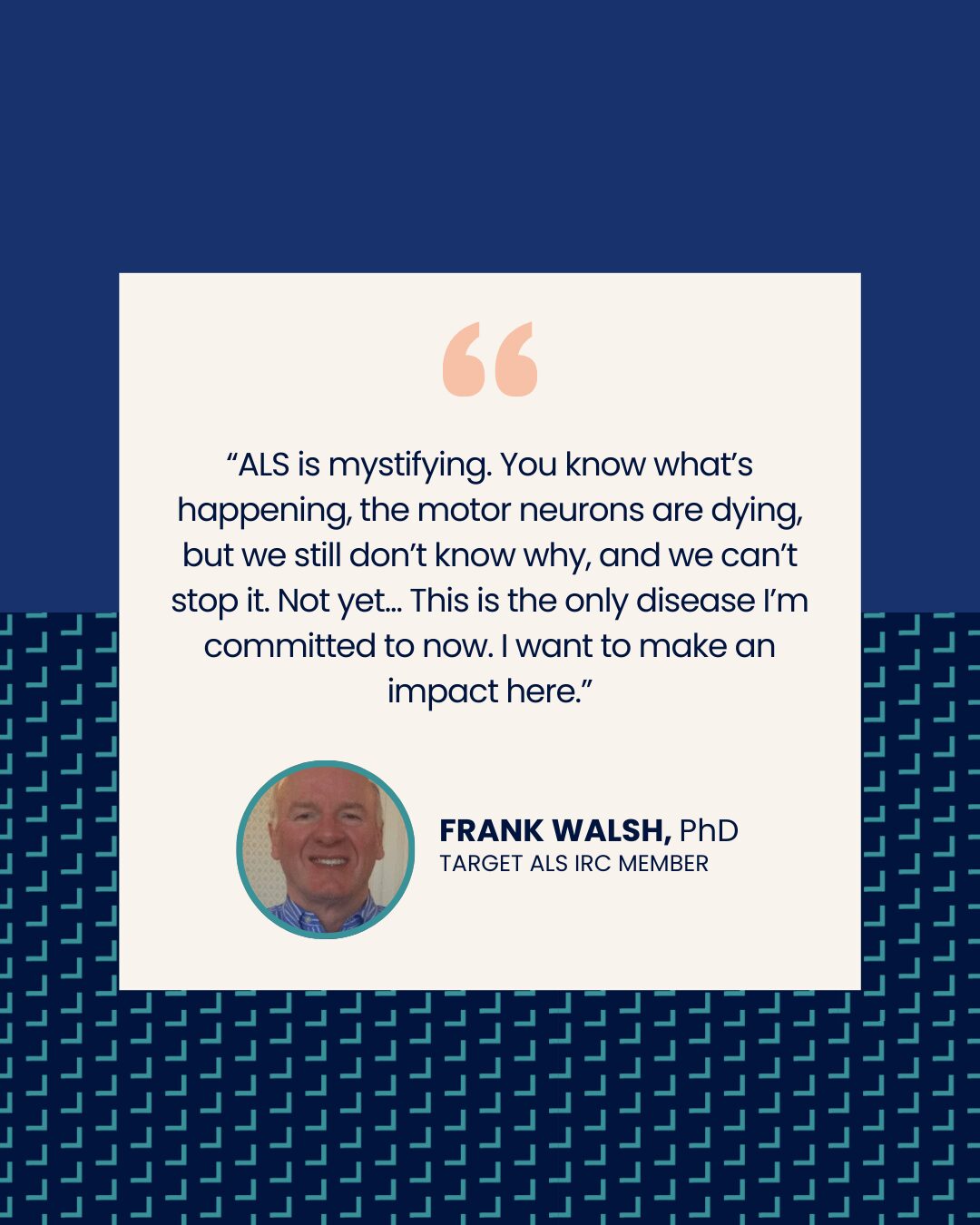At Target ALS, we fund bold ideas. And sometimes, those ideas show such profound promise that they warrant something we rarely do: a third consecutive year of support.
We’re thrilled to announce continued funding for three pioneering research consortia; projects that are not only rewriting the rules of ALS drug development, but also offering renewed hope to the ALS community. These teams are advancing highly innovative strategies that address the core biological drivers of ALS, with therapeutic approaches that are both mechanistically sound and potentially disease-modifying.
Here’s why we’re investing in their next chapter:
Denali Therapeutics + UC San Diego: Releasing TDP-43, Restoring Neurons
In a leap toward targeted therapy, Denali and UC San Diego are investigating a new role for the RNA granule protein OTUD4 in ALS pathology. Their research has uncovered that by lowering OTUD4 using antisense oligonucleotides (ASOs), they can free up the crucial TDP-43 protein; enabling it to resume its role in restoring STMN2, a key player in motor neuron repair.
Even more exciting? This team is planning to engineer this proposed drug to allow for intravenous delivery using their OTV (oligonucleotide transport vehicle) platform that gets across the blood-brain barrier, which is one of the biggest roadblocks in ALS treatment. Early studies show strong potential for a disease-modifying therapy that reaches deep into the nervous system with minimal side effects.
Why it matters: This work could unlock a whole new class of ALS drugs by fixing the broken gene regulation behind the disease, without the need for invasive spinal injections.
Trace Neuroscience + Stanford + Michigan + FMP Berlin: Correcting a Common Genetic Error
Another standout team is laser-focused on UNC13A, a gene whose splicing goes awry in many ALS patients, particularly when TDP-43 malfunctions. Their custom-designed ASOs are already restoring proper gene expression and reviving neuron communication in stem-cell and mouse models.
Now, with a new humanized ALS mouse model, they’re examining how these fixes translate to motor function and disease biomarkers, which is a crucial step toward clinical trials.
Why it matters: This therapy could help many people living with ALS, not just those with a genetic mutation, by reversing a common and destructive molecular change in the disease.
Johns Hopkins + Biogen: Advancing Antisense Therapy for C9orf72 ALS
This powerhouse collaboration is targeting the most common genetic cause of ALS and frontotemporal dementia, repeat expansions in the C9orf72 gene, using strand-specific antisense oligonucleotides (ASOs). These ASOs have already proven they can reduce toxic RNA and protein buildup in cell and mouse models, without harming healthy neurons.
Now, with third-year funding, the team is scaling up. These groups were involved in testing ASOs to the sense strand and thus are best equipped and committed to develop therapies against the toxic antisense strand. They’re testing different ASO doses, evaluating repeated treatments that mimic clinical protocols, and developing a new lab test (ELISA) to track levels of a toxic protein, which is produced by the aberrant antisense RNA; an essential step for future trials.
Why it matters: This work is paving the way for a realistic, trackable, and potentially disease-modifying therapy for people with C9orf72 repeat expansions, bringing lab breakthroughs closer to the clinic.
A Shared Mission
This third year of funding reflects our deep belief in these consortia and in the momentum they’ve built. Each project tackles a different dimension of ALS biology, but all are guided by a common thread: scientific excellence, collaboration, and a relentless focus on therapeutic impact.
The decision to fund a third year of work underscores the strength of the underlying science and the potential these approaches hold for meaningful clinical progress.”




